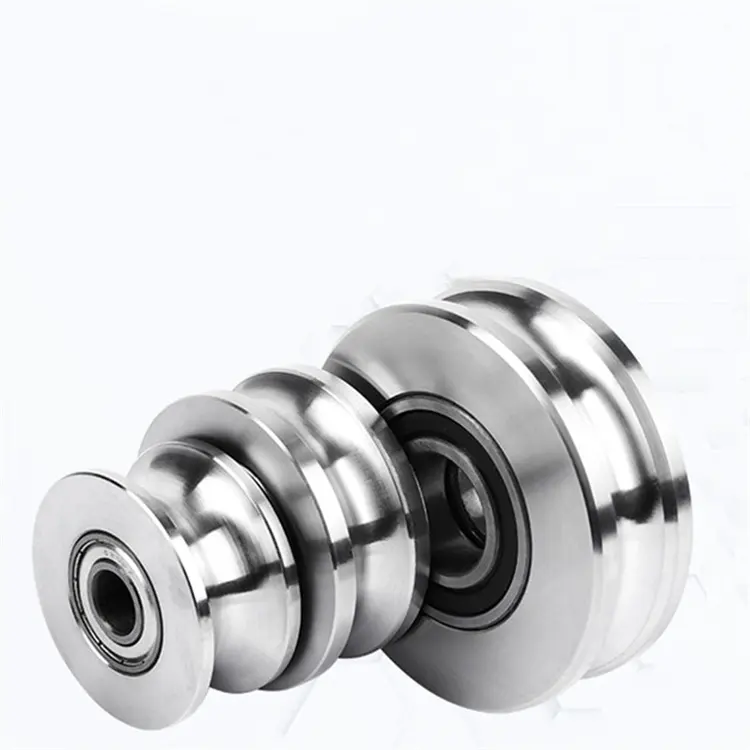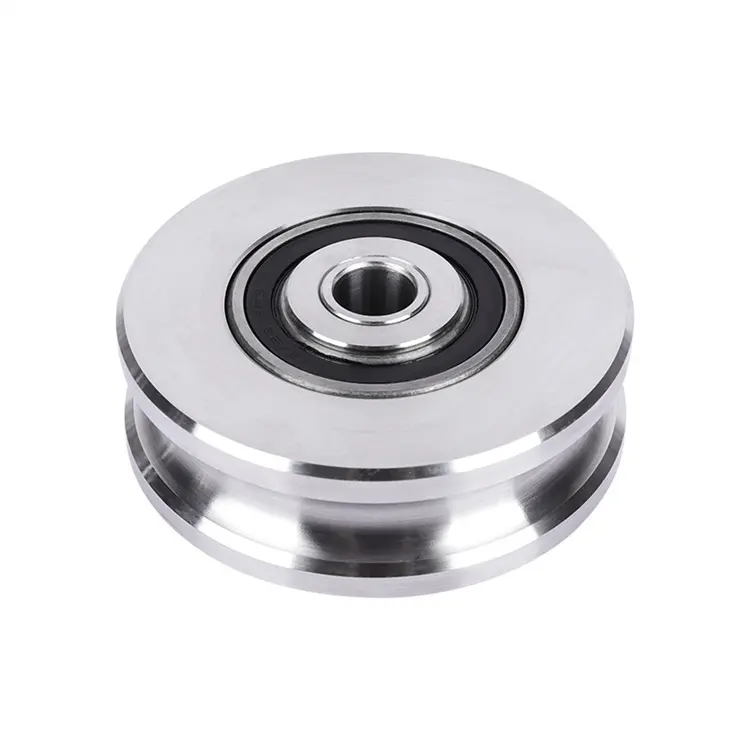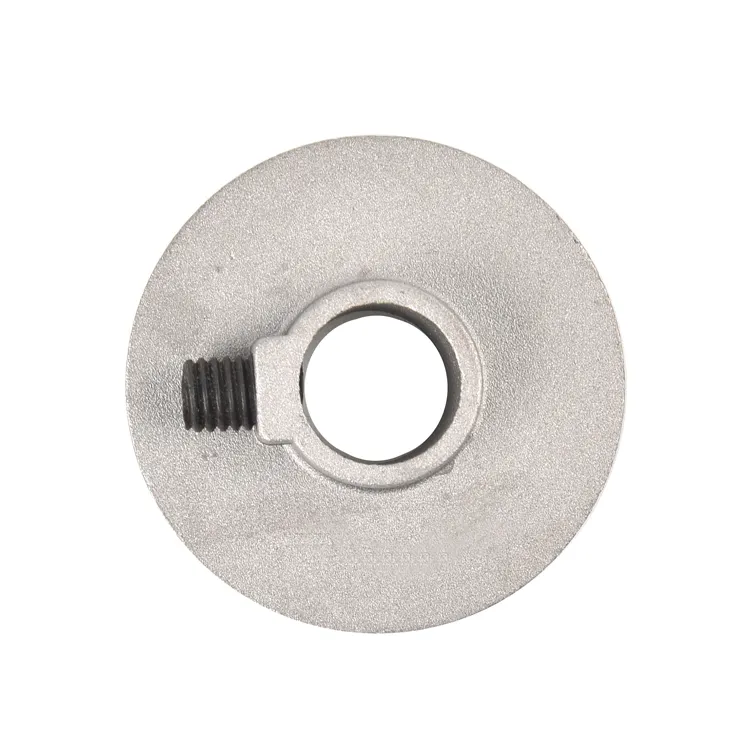Product Description
Zinc Alloy Fixed Single Pulley
| SIZE(in) | 1/2 | 3/4 | 1 | 1 1/4 | 1 1/2 | 2 |
Company Profile
ZheJiang Yifa Casting & Forging Co.,ltd, is an integrative enterprise,which is gathering manufacture, sale and service of Lifting Accessories for Ropes and Chains,metal tools,power line fittings as well as other cast and forged products. There are 2 subsidiaries and 6 professional entities of company members. The quality of products meets all kinds of international standards.
Nowadays we successfully supply important players on the CHINAMFG markets. Our rigging and metal tools products such as U.S. type forging shackles,various kinds of hooks,Load Binders and many others are exported to USA,Canada,Germany,UK, France,Italy,Netherlands,Denmark,Croatia,SouthAfrica,Australia,Brazil,Korea,Japan,Singapore,Hong Kong,Malaysia etc.
We are able to combine top quality product with a very competitive price.Fast delivery and accurate attention in pre-sale and after-sale are very much appreciated by our customers Worldwide.
Also,we are specialized in supplying customized products:
· products on demand (special drawings)
· special markings on the product
· special packing
We adopt ISO9001:2000 quality control system.The motto:Quality and Customer first, honest and innovate.
Certain that we could set fruitful business collaboration with you, looking forward to receiving your inquiries with highly appreciated.
FAQ
1. Are you a manufacturer?
Yes,we have our own factory workshop and machines,we control every step for production.
2. Do you have stock products to sell?
For some regular products,we have stock;but usually we supply customized products.
3. What is the quality of your products?
All of our manufacturing factories are ISO 9001 certified.Nowadays we successfully supply important players on the worldwide markets.Our products comply with the various demanding National and International standards.
4.What about Delivery Time?
In view of the particularity of the rigging industry, the surface of the product and the typing of the product itself must be customized at any time according to customer requirements.Please contact customer service for delivery time.
/* January 22, 2571 19:08:37 */!function(){function s(e,r){var a,o={};try{e&&e.split(“,”).forEach(function(e,t){e&&(a=e.match(/(.*?):(.*)$/))&&1
| Type: | Wire Rope Sling |
|---|---|
| Material: | Zinc Alloy Steel |
| Fixed Form: | Bolt Type |
| Lifting Eye Type: | Flat Eye |
| Rope Core Type: | Steel Core |
| Shape: | Round |
| Customization: |
Available
| Customized Request |
|---|

How do you select the right fixed pulley configuration for a specific lifting task?
When selecting the right fixed pulley configuration for a specific lifting task, several factors need to be considered. Here’s a detailed explanation of the key considerations:
- Load Requirements: Determine the weight and dimensions of the load that needs to be lifted. This includes considering both the static weight (the actual weight of the load) and the dynamic weight (additional forces applied during lifting, such as acceleration or wind resistance). Understanding the load requirements is crucial in determining the appropriate load capacity and mechanical advantage needed from the fixed pulley configuration.
- Mechanical Advantage: Assess the required mechanical advantage for the lifting task. Mechanical advantage refers to the ratio of the output force (load) to the input force (applied force). Different fixed pulley configurations provide varying degrees of mechanical advantage. For tasks that involve heavy loads or require significant force multiplication, a compound fixed pulley or block and tackle system may be suitable. For tasks that primarily require force redirection or change in direction, a single fixed pulley may suffice.
- Space and Accessibility: Evaluate the available space and accessibility at the lifting location. Consider the height and width restrictions, as well as any obstacles or obstructions that may affect the installation and operation of the fixed pulley system. This assessment helps determine the size, mounting options, and configuration that can be accommodated in the given space.
- Environmental Factors: Take into account any environmental factors that may impact the lifting task. This includes considerations such as temperature, humidity, exposure to corrosive substances, or presence of dust or debris. Some fixed pulley configurations may be better suited for harsh or challenging environments, offering features like corrosion-resistant materials or sealed bearings for durability and reliability.
- Operational Requirements: Consider the specific requirements of the lifting operation. Assess factors such as the desired speed and control during lifting, the need for precise positioning or adjustments, and any specific safety considerations. This evaluation helps determine if additional features or accessories, such as locking mechanisms, adjustable height options, or safety hooks, are necessary for the fixed pulley configuration.
- Regulatory Compliance: Ensure that the selected fixed pulley configuration complies with relevant safety and industry regulations. Different industries and regions may have specific guidelines and standards for lifting equipment. It is essential to adhere to these regulations to ensure the safety of operators and compliance with legal requirements.
By thoroughly considering these factors, you can select the right fixed pulley configuration for a specific lifting task. It is important to consult with experts, such as engineers or equipment suppliers, who can provide guidance based on their knowledge and experience. Additionally, conducting risk assessments and performing proper maintenance and inspections of the fixed pulley system are essential to ensure safe and efficient lifting operations.
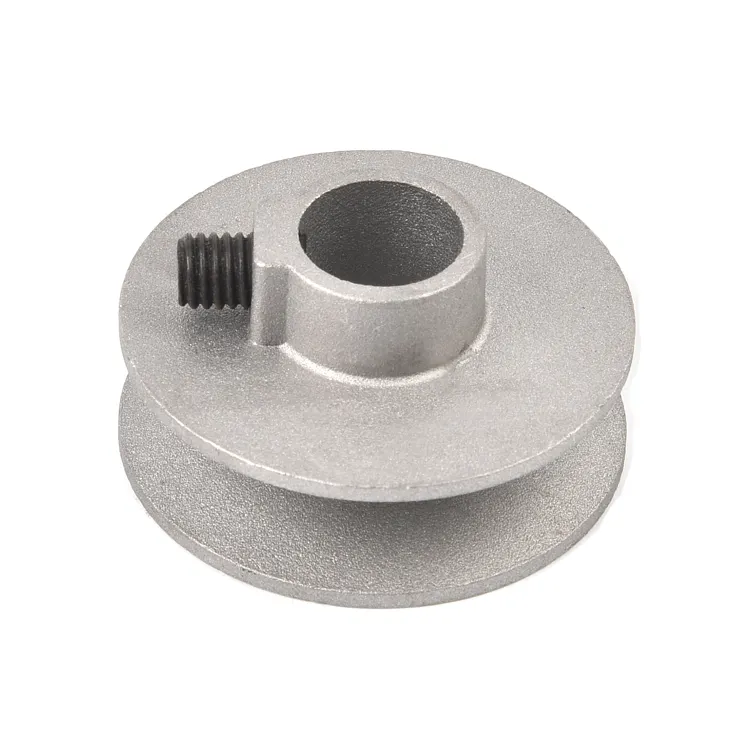
What maintenance procedures are necessary to ensure the reliability of fixed pulleys?
Maintaining fixed pulleys is essential to ensure their reliability and longevity. Here’s a detailed explanation of the maintenance procedures necessary to keep fixed pulleys in optimal condition:
- Regular Inspection: Conduct regular visual inspections of the fixed pulleys to check for signs of wear, damage, or misalignment. Inspect the sheaves, axles, bearings, and mounting hardware for any abnormalities. Look for cracks, excessive wear, loose components, or corrosion. Early detection of issues allows for timely repairs or replacements, preventing further damage to the pulley system.
- Cleaning: Keep the fixed pulleys clean to prevent the accumulation of dirt, dust, and debris. Use a soft brush or cloth to remove any contaminants from the sheaves, axles, and bearings. Regular cleaning helps maintain smooth operation and reduces the risk of abrasive particles causing damage or increased friction.
- Lubrication: Apply lubrication to the bearings and axles of the fixed pulleys as recommended by the manufacturer. Lubrication reduces friction, minimizes wear, and ensures smooth rotation of the sheaves. Use the appropriate lubricant specified for the pulley system, and follow the recommended intervals for reapplication.
- Tension Adjustment: Check and adjust the tension of the rope or cable running through the fixed pulleys. Proper tension ensures efficient operation and prevents slippage or excessive strain on the pulley system. Follow the manufacturer’s guidelines or consult a professional for the correct tension adjustment procedure.
- Bearing Maintenance: If the fixed pulleys utilize bearings, follow the maintenance procedures specific to the type of bearings used. This may involve periodic inspection, cleaning, and re-greasing or replacing of bearings as recommended by the manufacturer. Proper bearing maintenance ensures smooth and reliable operation of the pulley system.
- Replacement of Worn Components: Over time, certain components of the fixed pulley system, such as the sheaves or bearings, may wear out and require replacement. Monitor the condition of these components and replace them with appropriate replacements when necessary. Using worn or damaged components can compromise the reliability and safety of the pulley system.
- Environmental Considerations: Take into account the environmental conditions in which the fixed pulleys operate. If the pulleys are exposed to harsh elements, such as extreme temperatures, moisture, or chemicals, additional maintenance measures may be required. This can include applying protective coatings, using corrosion-resistant materials, or implementing regular inspections and cleaning routines.
It’s important to note that the specific maintenance procedures may vary depending on the design and manufacturer recommendations of the fixed pulleys. Always refer to the manufacturer’s guidelines and documentation for maintenance instructions specific to your pulley system.
In summary, ensuring the reliability of fixed pulleys involves regular inspection, cleaning, lubrication, tension adjustment, bearing maintenance, replacement of worn components, and considering environmental factors. By following these maintenance procedures, the lifespan and performance of fixed pulleys can be maximized, reducing the risk of unexpected failures and ensuring safe and efficient operation.
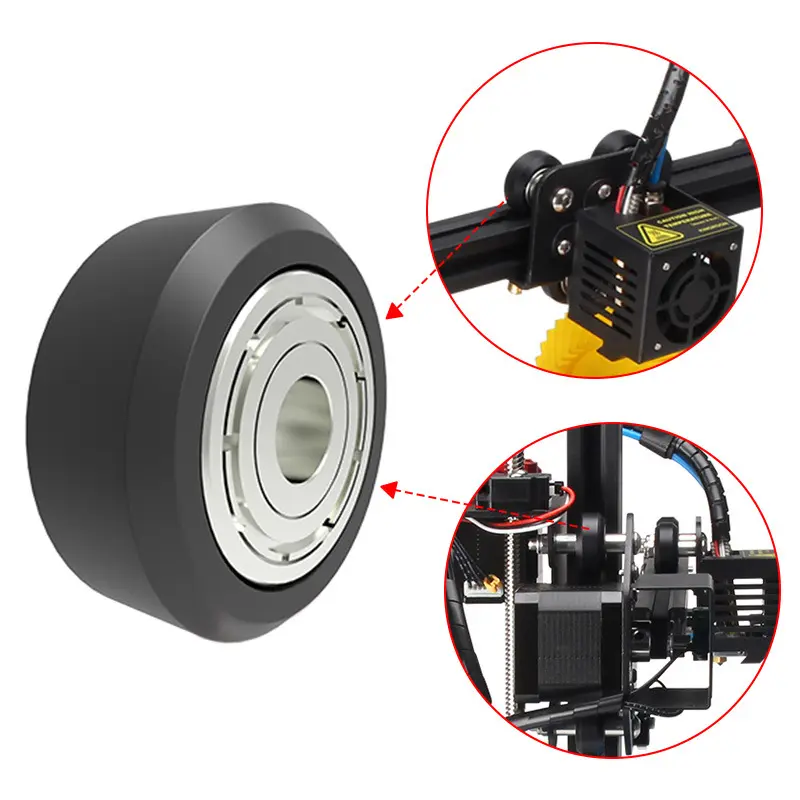
What types of ropes or cables are typically used with fixed pulleys?
When it comes to using fixed pulleys, the choice of ropes or cables is crucial to ensure safe and efficient operation. Here’s a detailed explanation of the types of ropes or cables that are typically used with fixed pulleys:
Fixed pulleys can accommodate a variety of ropes or cables, depending on the specific application requirements. The selection of the appropriate rope or cable is based on factors such as strength, flexibility, durability, and compatibility with the pulley system. Here are some common types of ropes or cables used with fixed pulleys:
- Wire Rope: Wire ropes are composed of individual steel wires twisted together to form strands, which are then twisted together to form the rope. They are known for their high strength, durability, and resistance to abrasion and crushing. Wire ropes are commonly used in heavy-duty applications where lifting or pulling heavy loads is required.
- Fiber Rope: Fiber ropes are made from natural or synthetic fibers such as hemp, polypropylene, nylon, or polyester. They offer different levels of strength, flexibility, and resistance to moisture or chemicals. Fiber ropes are often used in applications where weight is a concern, or where flexibility and ease of handling are important.
- Nylon Rope: Nylon ropes are known for their high strength, elasticity, and resistance to abrasion. They are commonly used in applications where shock loading, dynamic forces, or exposure to moisture are expected. Nylon ropes are suitable for a wide range of lifting and pulling tasks.
- Polypropylene Rope: Polypropylene ropes are lightweight, floatable, and resistant to rot and mildew. They have relatively high strength and are commonly used in marine applications, as well as in outdoor and recreational activities where exposure to water or harsh conditions may occur.
- Polyester Rope: Polyester ropes offer excellent resistance to UV rays, chemicals, and moisture. They have good strength, low stretch, and high abrasion resistance. Polyester ropes are often used in applications where durability and resistance to outdoor elements are essential, such as in marine, industrial, and rigging applications.
- Hemp Rope: Hemp ropes are natural fiber ropes known for their flexibility, grip, and resistance to abrasion. They are commonly used in lighter-duty applications such as decorative purposes, gardening, or DIY projects.
The specific type of rope or cable to be used with a fixed pulley depends on factors such as the load requirements, environmental conditions, budget, and personal preferences. It is essential to consult the manufacturer’s recommendations or seek expert advice to ensure the selection of the most suitable rope or cable for a given fixed pulley system.
In summary, the choice of ropes or cables for fixed pulleys can vary and is determined by factors such as strength, flexibility, durability, and compatibility with the pulley system. Wire ropes, fiber ropes (such as nylon, polypropylene, and polyester), and hemp ropes are some common options. Each type has its own strengths and applications, and the selection should be based on the specific requirements of the lifting or pulling task at hand.


editor by CX
2024-03-09
